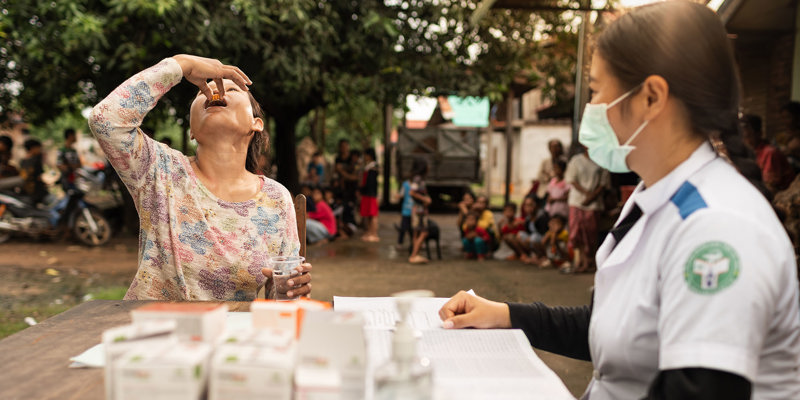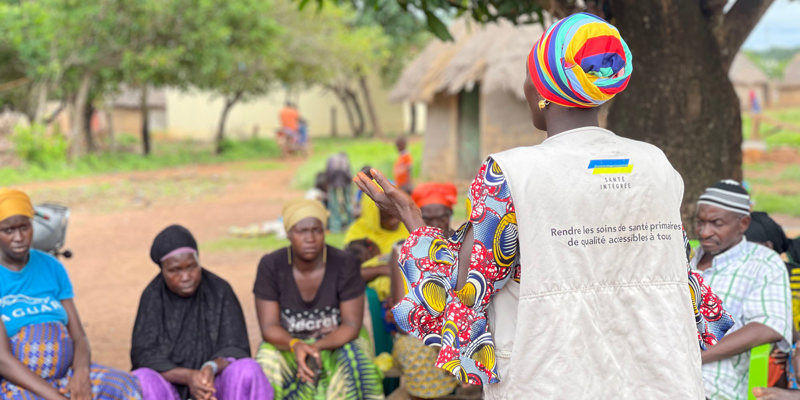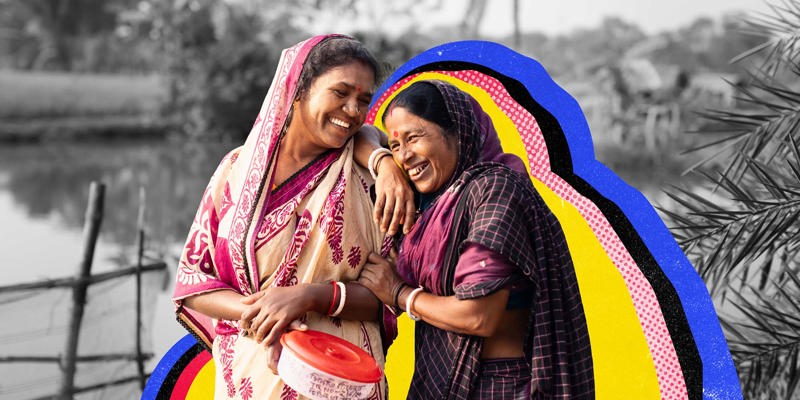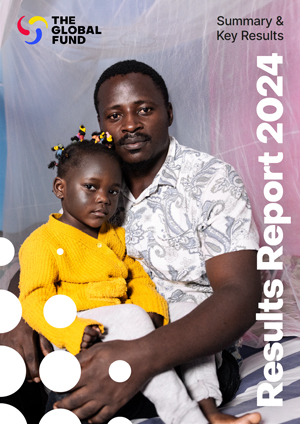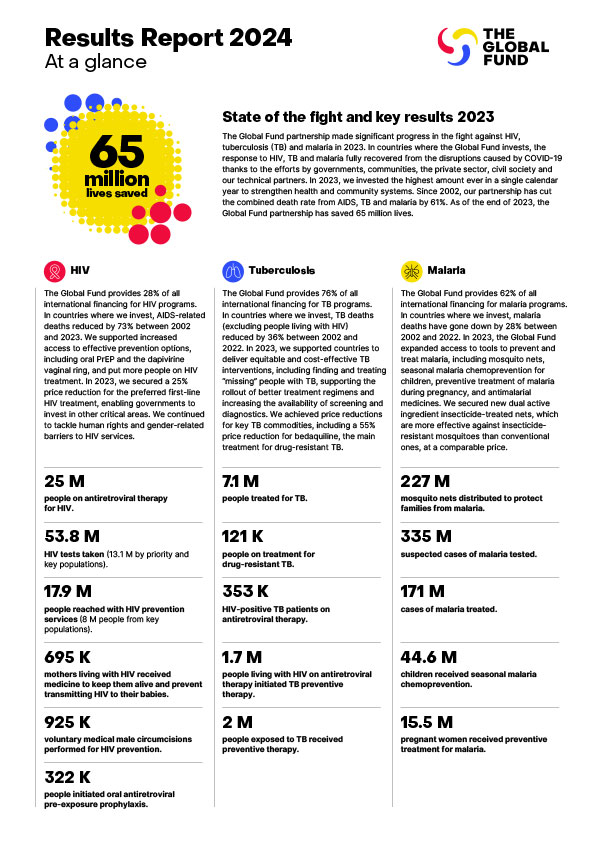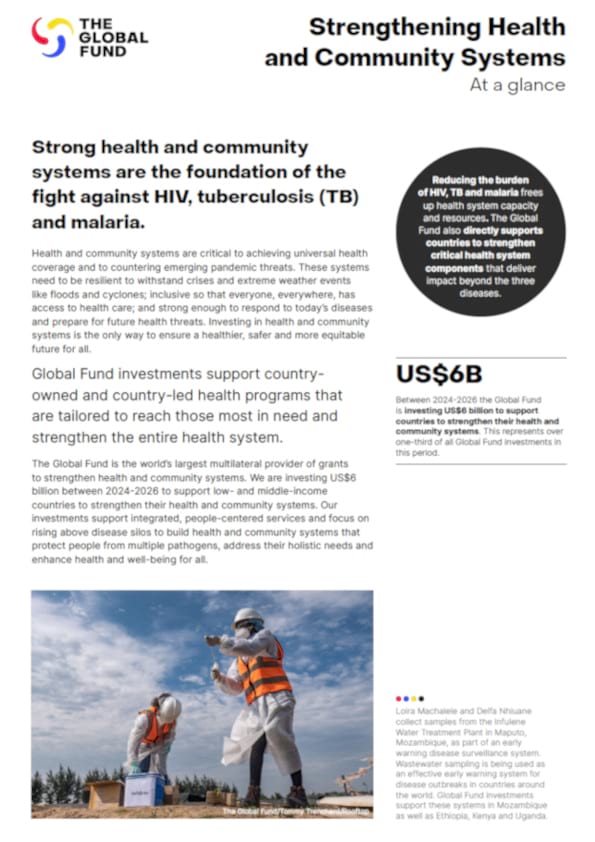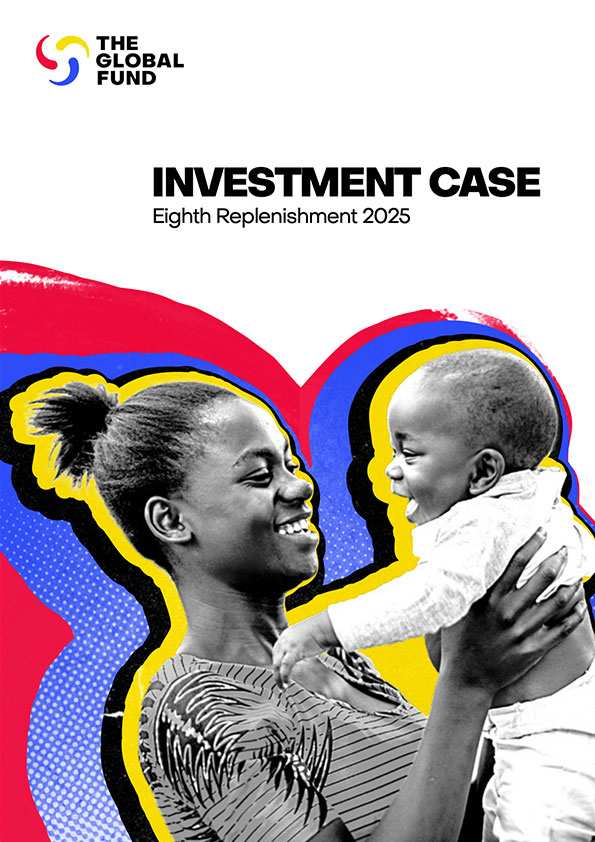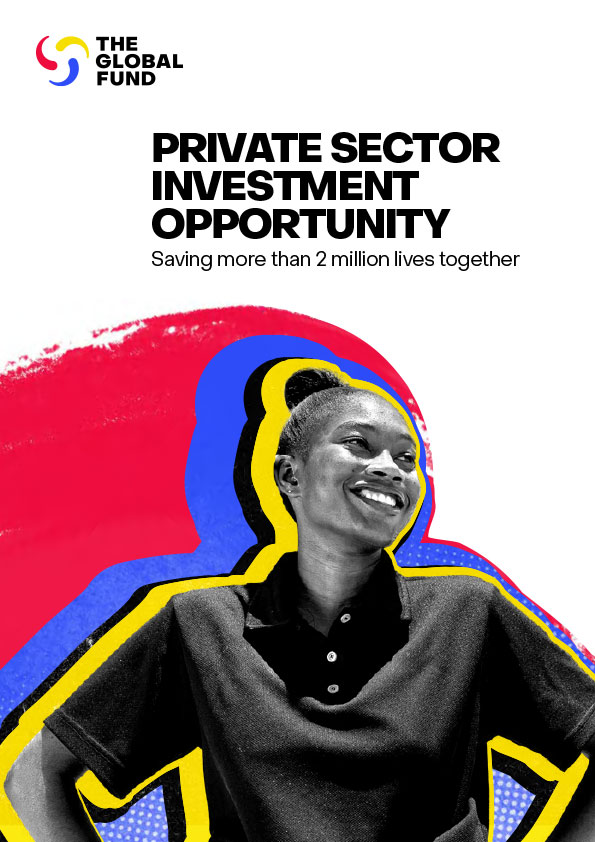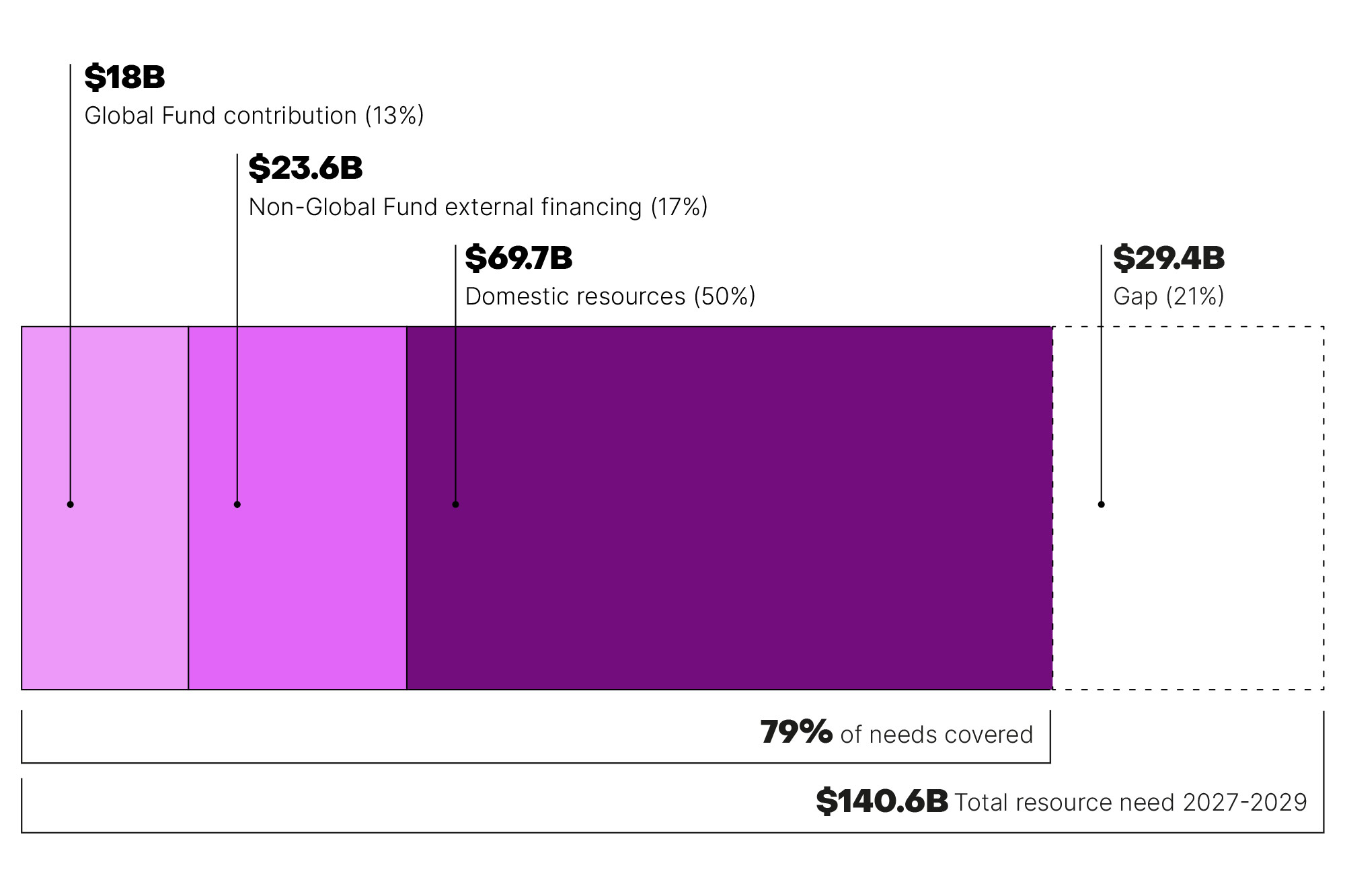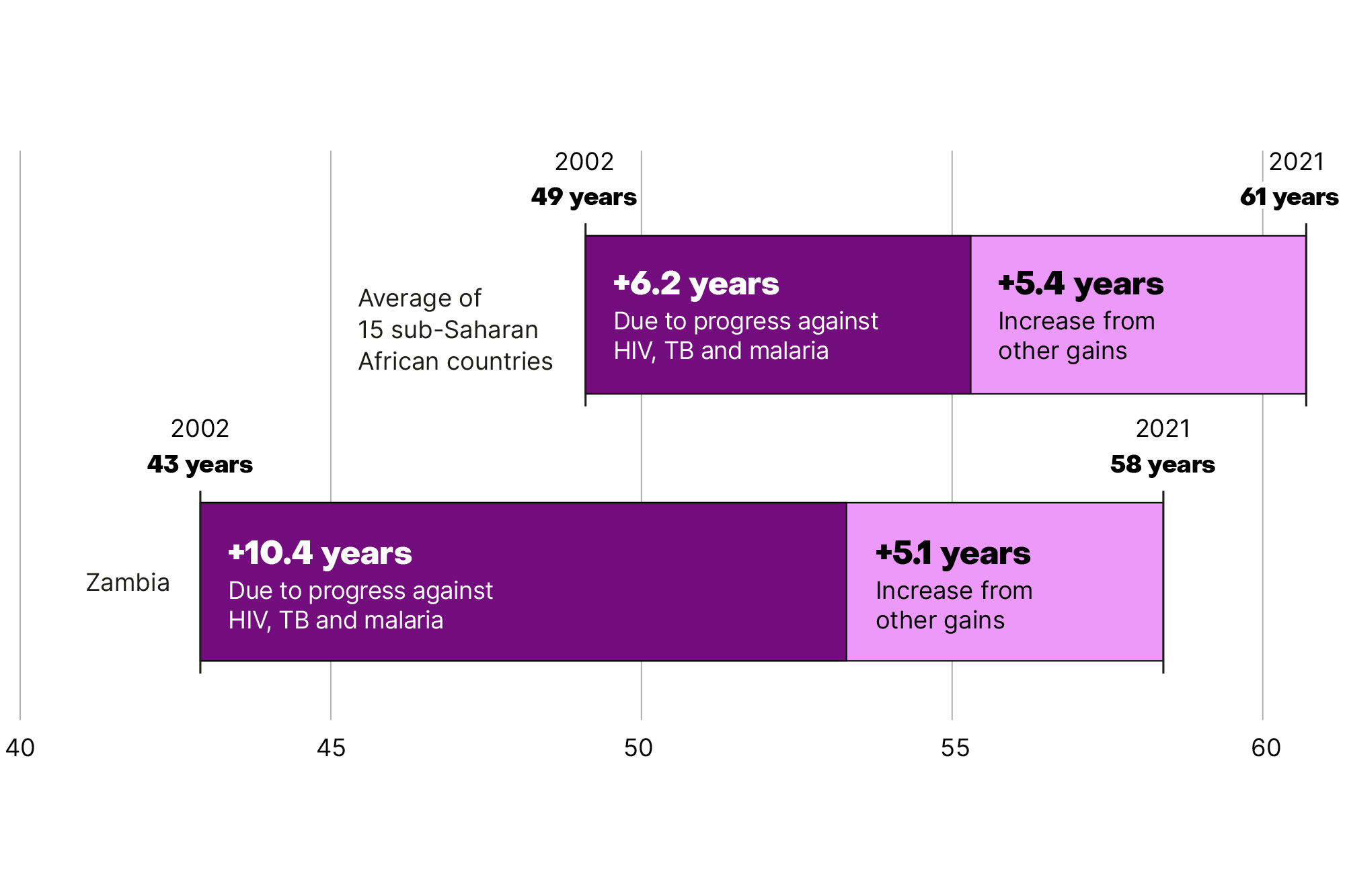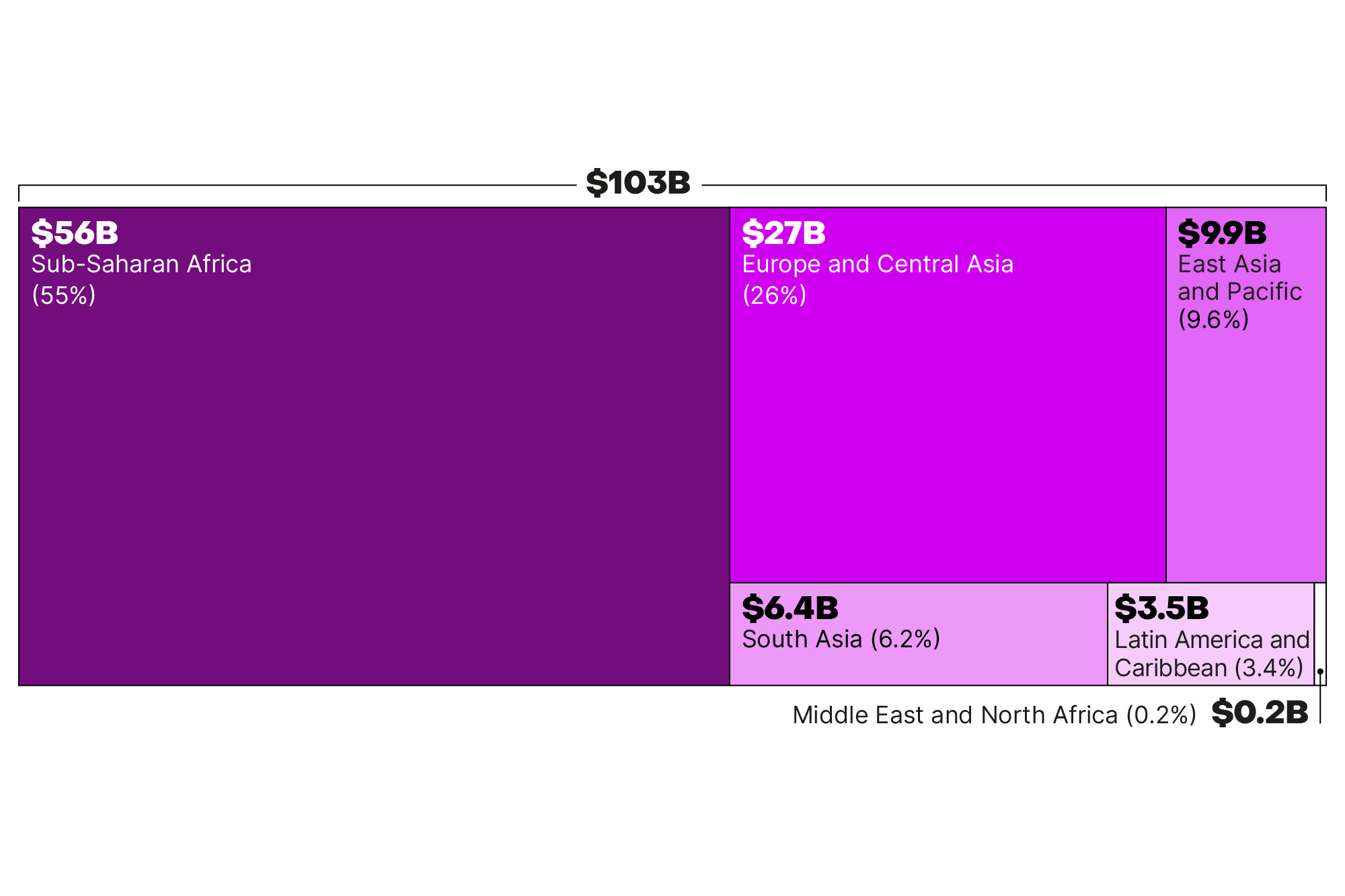In times of crisis and uncertainty, investing in the Global Fund is one of the most effective ways to improve the livelihoods of millions while strengthening global health security.
Despite the challenges posed by economic stresses, conflict, climate change and the erosion of human rights and gender equality, the Global Fund has continued to make strong progress against HIV, TB and malaria. Through our proven model of turning donor dollars into impact at scale, the partnership is bringing the world closer to the Sustainable Development Goal 3 target of ending the three diseases as public health threats.
Yet HIV, TB and malaria are formidable adversaries that are quick to punish any dilution of effort. We cannot allow ourselves to go backwards. To finish the fight, we must sustain our investments and massively increase our focus on innovation and efficiency.
The Global Fund’s Eighth Replenishment is an opportunity to take bold action, investing in an accelerated effort to ensure that future generations can live in a world free from the deadliest infectious diseases. Together, let’s give it everything.

